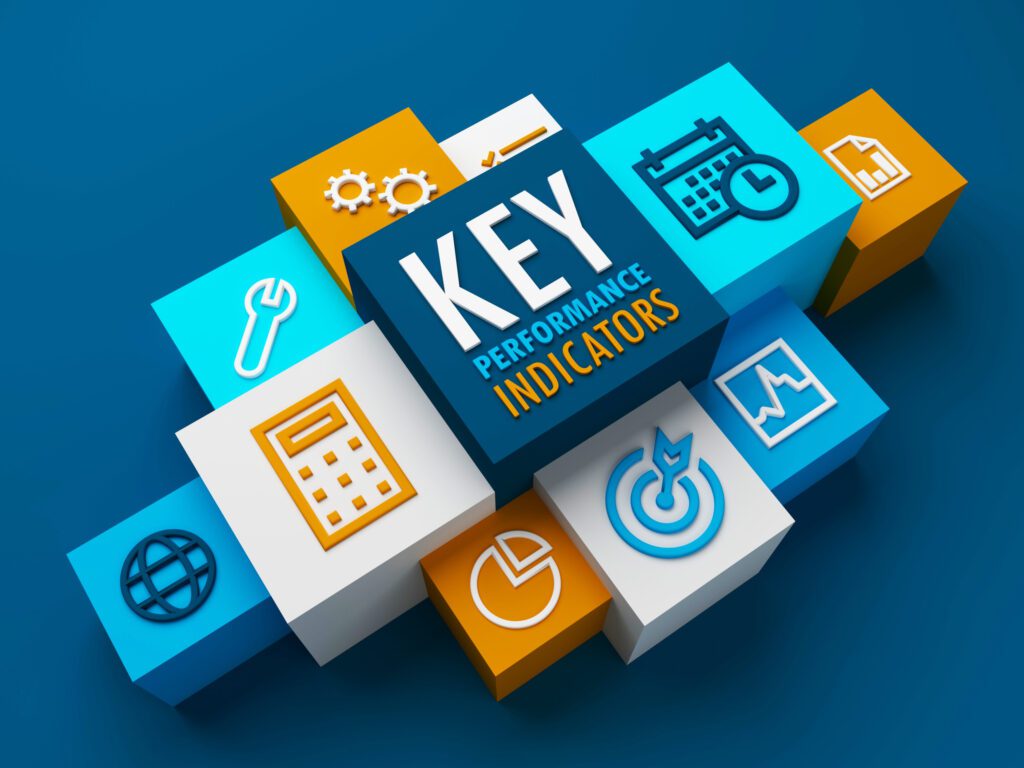Key Performance Indicators
A Definition for the Rest of Us

At Sutherland Weston, we have an oft-used saying: “Facts, not Folklore.” Meaning just that, use facts and not fairy tales to create strong marketing plans and to meaningfully measure the progress pf those plans. One way to assure you are sticking to the facts is to develop KPIs for your business or organization.
KPI stands for Key Performance Indicator. And while business gurus toss it around willy-nilly, for most of us, the easiest way to think of a KPI is “the best way to measure progress.”
A KPI is a measurable value that businesses use to evaluate the success of specific objectives or overall performance. KPIs serve as a navigational tool, allowing business owners to identify areas for improvement or to double down on successful strategies. They provide insights that can help business owners make data-driven decisions, as opposed to relying on gut feelings or subjective judgments.
Examples of straightforward KPIs that can help you measure growth:
- Foot Traffic: The number of people who walk into the store each day. This can be particularly crucial for retail businesses.
- Average Transaction Value: The average dollar amount that a customer spends in a single transaction at your store. It can help you understand customer spending habits and how to respond to them. For example, low transaction averages mean you either need more transactions or need to find ways to sell more product/services to each customer.
- Inventory Turnover: A measure of how often a business sells its entire inventory over a specific time period. High turnover could indicate good sales, while low turnover might mean you’re overstocked.
- Customer Retention Rate: The percentage of customers who return to do business with you again. A high customer retention rate generally indicates customer satisfaction.
- Net Profit Margin: This shows what percentage of your sales turn into profits, giving you an idea of your overall financial health.
- Customer Satisfaction Score (CSAT): Usually gathered through post-purchase surveys, this measures how satisfied customers are with their purchase or overall experience. A simple email survey asking your customers to rate their satisfaction on a scale of 1-7 is a great way to start!
- Employee Turnover Rate: The rate at which employees leave the company and need to be replaced. High turnover could indicate low job satisfaction or other morale issues that may also affect customer experience.
- Social Media Engagement: Measures the likes, shares, and comments on your business’s social media platforms. This can be a strong indicator of brand awareness and customer engagement. But remember, this measurement is not worth much if you are only posting a few times a year. Social media is a two-way street!
- Sales Per Employee: This can help you understand how effective your staff is at selling. It can be particularly useful for commission-based or sales-focused roles.
- Conversion Rate: In a retail context, this could mean the number of people who make a purchase as a percentage of the total number of visitors. Online, it often refers to the number of website visitors who ask for more information or place an order, depending on your website and business offerings.
Selecting the right KPIs for your business depends on your industry, your specific business goals, and what you consider critical for your success. Monitoring these metrics can help you adapt your business strategy in real-time to improve performance.
Want to know more? Give us a call, we’d love to talk about how you can plan and measure your company’s success!
